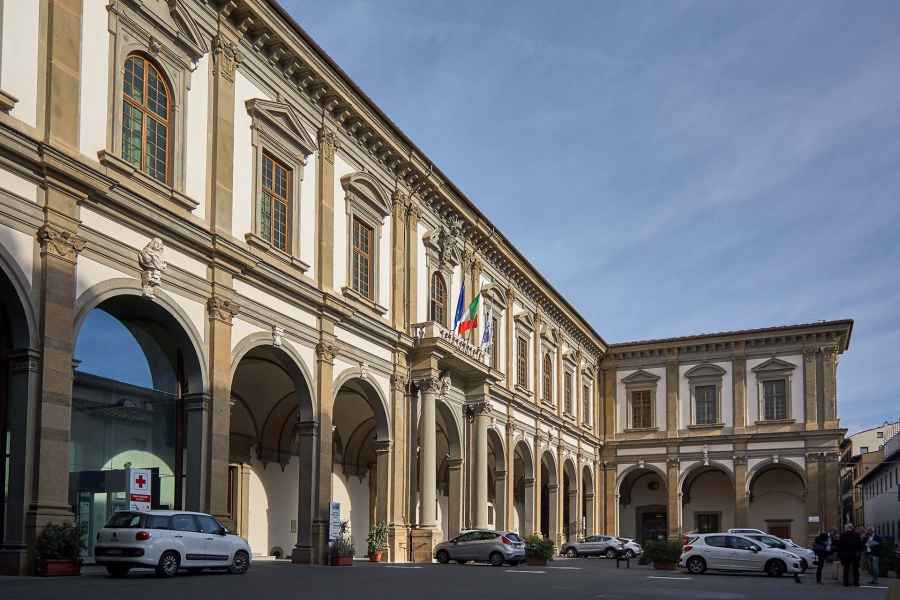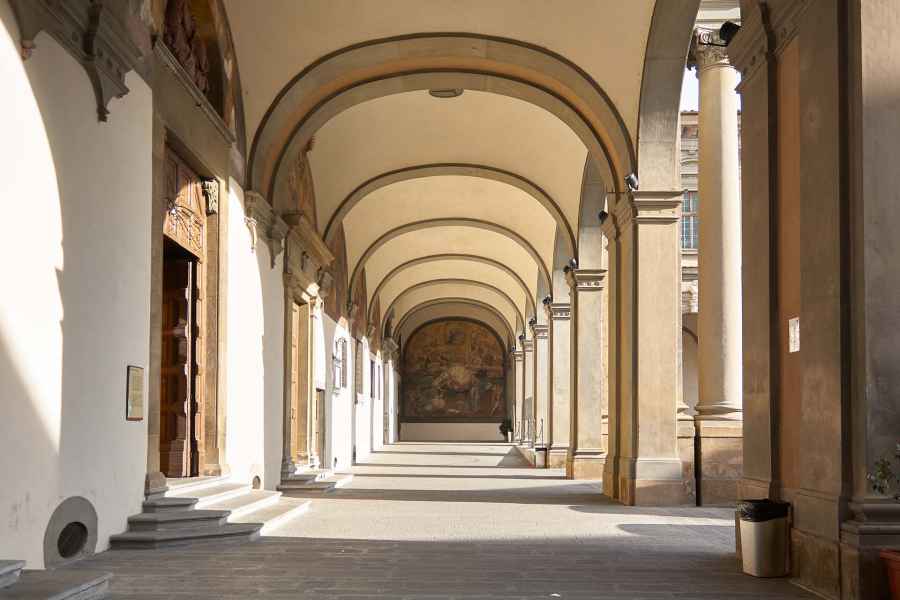Leonardo's relations with the "Spedale" of Santa Maria Nuova are documented not only in his will but also at various moments during his lifetime. Here he had his bank, and here he deposited cases of printed books, manuscripts and albums of drawings. And it was here that he conducted anatomical studies.
Upon leaving Milan near the end of 1499, Leonardo transferred to Florence, to the "bank" of Santa Maria Nuova, 600 «gold florins heavy with gold». In the following years he withdrew 400 florins. Before leaving for Milan, on May 20, 1506, he personally withdrew 50 florins, which left 150 that, according to the commitment stipulated in Santa Maria Nuova on the following May 30, were to serve as guarantee to the Florentine Signoria that he would return to the city within three months, upon penalty of losing his money. The guarantor was Leonardo di Giovanni Buonafé, the efficient "spedalingo" (hospitalarius) of Santa Maria Nuova for three decades starting from 1500, and known also as the client of such artists as Pontormo, Rosso Fiorentino, Benedetto da Maiano, and Giovanni della Robbia.
Leonardo did not return to Florence in time, and the Signoria confiscated his 150 florins, requesting also that they be reimbursed for «the money spent for the work», the Battle of Anghiari, for which Leonardo had «made only a little start in a great work.»
On October 10, 1513 he personally deposited at Santa Maria Nuova 300 scudi di sole (French currency). In his will dated April 23, 1519, drawn up at Amboise: «He orders and desires that the sum of 400 scudi del solethat he has deposited in the hand of the Camerlingo de’ Sancta Maria de Nove in the city of Florence be given to his blood brothers residing in Florence, with any interest that may be due up to now from the aforesaid Camerlenghi…».
An autograph folio of Leonardo now in the Windsor Royal Library confutes the legend that he stole cadavers, to secretly use them as models for his drawings. It is Leonardo himself to explain how he acted in full legality and proceeded with great humanity: «And this old man told me, a few hours before his death, that was over a hundred years old and he was conscious of no bodily failure, apart from weakness. And thus sitting on a bed in the Hospital of Santa Maria Nuova, with no other movement or sign of distress, he passed away from this life. And I performed anatomy on him, to find the cause of such a gentle death: which I found to result from failure of the blood and the artery that feeds the heart and the lower members, which I found to be dry, shrunk and withered. This dissection I described very diligently and with the greatest ease, since the body was without fat or humours, which severely hinder recognition of the parts. The other dissection was of a child two years old, in which I found everything the opposite that of the old man».
A tradition, which has turned out to be more legend than documented history, tells of two great stone basins situated in the undercroft of the Hospital and used for the cadavers studied by Leonardo. Although this is a highly evocative image, it still remains to be proved.

Hospital of Santa Maria Nuova
Texts by
Alessandro Vezzosi, in collaboration with Agnese Sabato / English translation by Catherine Frost
Related resources
Gallery
Related resources
Gallery







